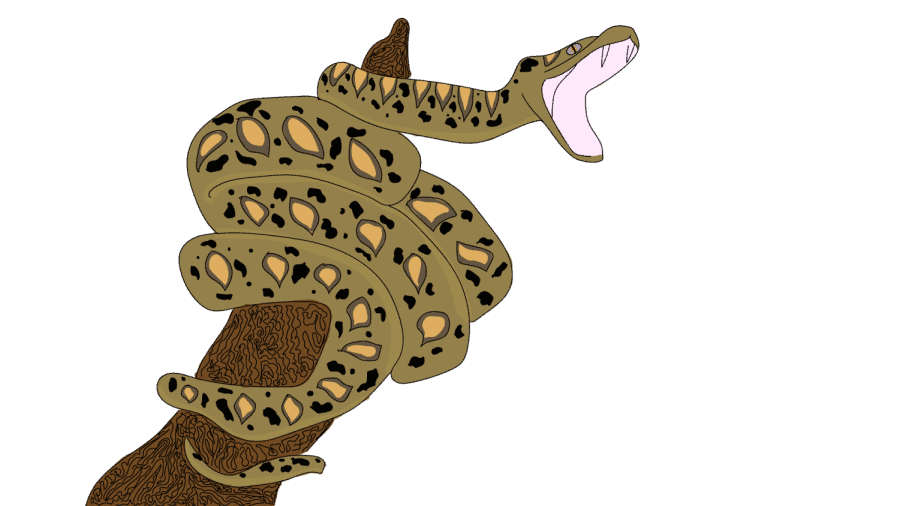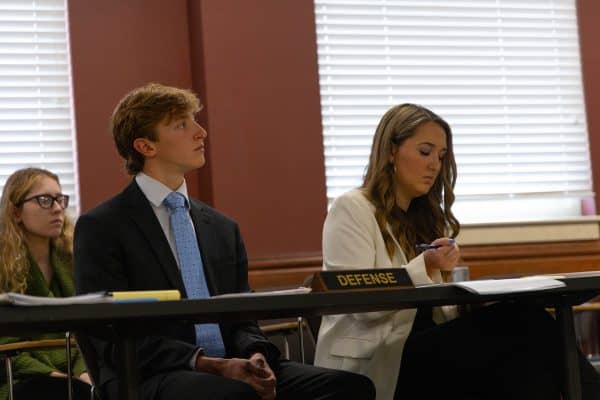How climate change and invasive species work in tandem to destabilize the environment
September 19, 2021
According to the U.S. Bureau of Information Resource Management, invasive species and climate change represent two of the five major global threats to ecosystems.
In most cases, the introduction of a species into a new environment is usually accidental and caused by humans, whether through an insect trapped in a car, seeds on someone’s clothes or marine animals stuck in boats.
UA associate professor of biological sciences Jennifer Howeth specializes in community and spatial ecology, and invasion and conservation biology. Howeth said that because a large portion of species in international trade originate from the tropics, the number of invasives in the United States originating from tropical regions will grow. There is a greater chance of a regional climatic match in the presence of warming from climate change.
Howeth said the greenhouse effect has yielded an overall warming of the planet that has decreased the suitability of regional habitats for some species and increased it for others.
It is estimated that the growing season for the United States has increased by two weeks on average. While this may seem like a blessing to farmers, it actually creates a longer window of time for invasive species to take advantage of the extended spring and “hijack” fertile soil.
According to Green Matters, tropical hurricanes, floods, droughts and other highly damaging phenomena can damage habitats and transport invasive species to new areas.
Howeth said that Alabama has the potential to begin the same invasion hot-spot situation as Florida in a few decades if our regional climate continues to warm as predicted.
“There is an increasing probability that non-native species from warmer climates, like the tropics, can establish reproducing populations in northern latitudes and become invasive,” Howeth said.
According to the Environmental Protection Agency, invasive species are thought to have been involved in 70% of this century’s extinctions of native aquatic species, and 42% of current endangered species are impacted significantly by invasive species.
Not only do these pests have the potential to decimate ecosystems, but in some cases, their effects on the economy can be staggering.
The Burmese python is one of the most extreme examples of invasive species disrupting the economy and the environment in places like Florida.
With a population estimated to be around 300,000 in Southern Florida alone, the species was once considered to be an exotic status symbol from Southern Asia. Now, mere decades after first being imported, they are one of the most troubling pests and predators in the southeastern United States.
According to the National Park Service, studies show that Burmese pythons are probably the main reason that mammals have declined sharply in number in Everglades National Park.
The Tuscaloosa News reports that pythons are here to stay, especially as climates become warmer in the gulf region due to global warming.
“Recently, reports of a python on the lam have come in from Tuscaloosa, Morgantown, West Virginia, and Beech Grove, Indiana,” the article said. “The climate along the southern Atlantic and Gulf coasts is hospitable enough for the snakes to survive through summer and even longer during mild winters.”
According to Howeth, Alabama currently is host to a number of non-native invasive species, including the plant species kudzu and mimosa, and freshwater zebra mussels.
“Kudzu vines can grow up to 1 meter per day in the summer and have the potential to smother the native trees and shrubs that the species utilizes for structural support,” Howeth said. “Removing kudzu is costly but is done when needed to control vegetative growth on telephone poles and native tree species. Mimosa trees prefer disturbed areas along roadways.”
Howeth said that mimosa and its distinctive pink blossoms can be found along the I-20 corridor between Tuscaloosa and Birmingham, and within Tuscaloosa along McFarland Boulevard and Rice Mine Road.
Zebra mussels can be found in some of Alabama’s main river systems.
“Zebra mussels have recently established in the Black Warrior River not far from Manderson Landing,” Howeth said. “They are highly effective filter feeders and much more efficient at removing plankton from the water column than the co-occurring native mussels, which they can outcompete as a consequence.”
A lack of natural predators makes the Southeast a hotbed for invasive species to become dominant in their respective ecosystems, meaning that they will continue to reproduce with no natural forces to level out their numbers.
According to Howeth, zebra mussels have caused billions of dollars worth of damage to infrastructure in the United States. Chemical and physical control methods have generally not been effective in removing zebra mussels.
Howeth said that there are several things people can do to avoid accidentally dispersing invasive plants and pathogens from one place to another.
“After a hike outdoors, remove any seeds that might be stuck to your clothing and wash off mud on the soles of your shoes,” Howeth said. “Check for seeds stuck in the fur of your dogs, too.”
According to the Smithsonian National Museum of Natural History, plant seeds that get stuck on clothing or vehicle tires may travel long distances from where they originated. Insects that get trapped in cars are re-released into new habitats.
While boating is a popular pastime for UA students, Howeth said that making sure to drain the boat after a boat ride on Alabama waterways, washing the boat with a high-pressure sprayer and allowing the boat to air dry for a week prior to being relaunched will help prevent boat-mediated dispersal of zebra mussels between water bodies.
Extended growing seasons, more extreme temperature changes and the destabilizing effects of invasives on ecosystems combine to add stress on both native and invasive species. The critical difference between the two is that invasives are typically better equipped to adapt to these extreme changes.











